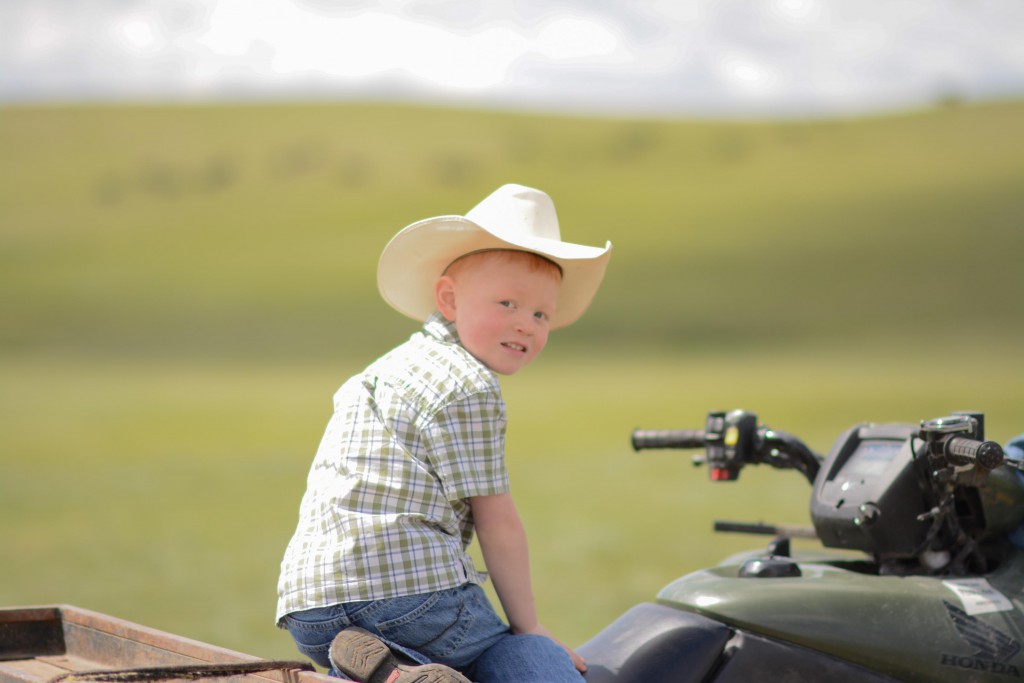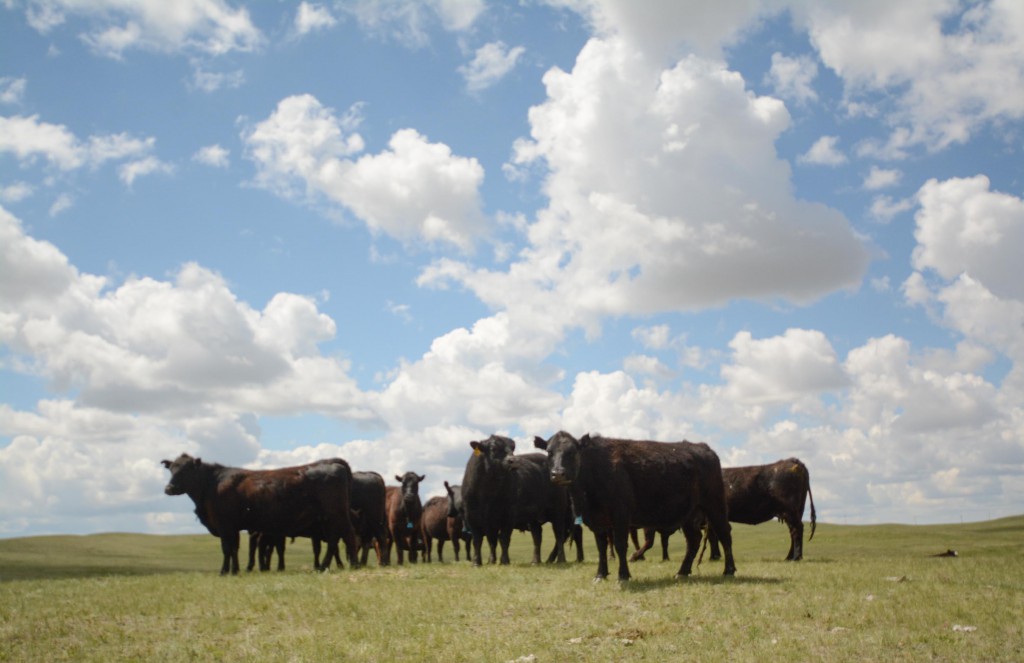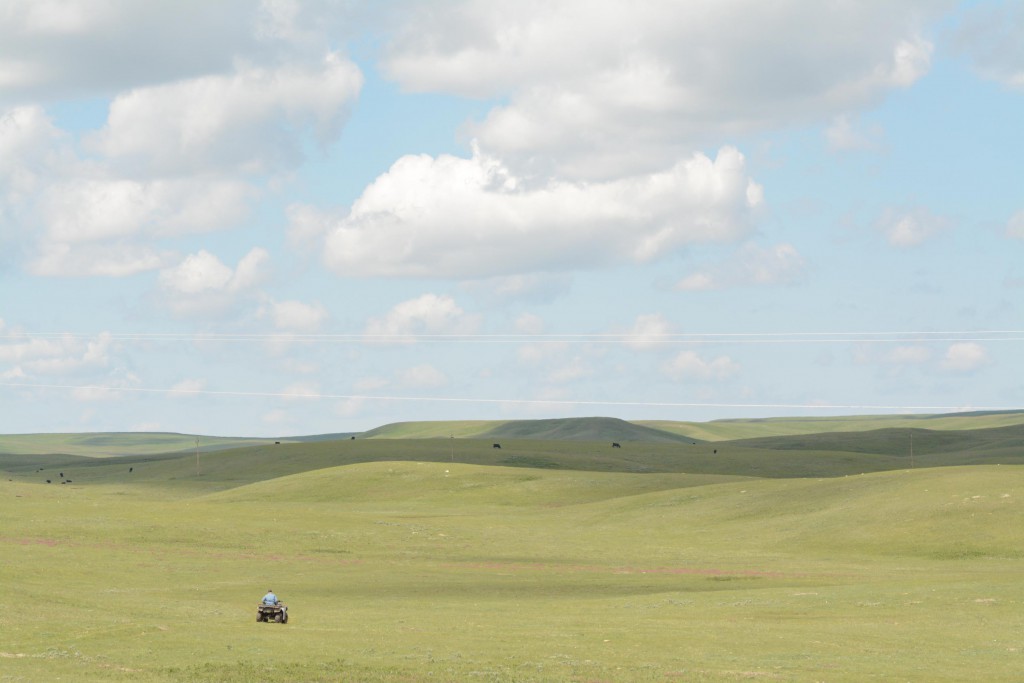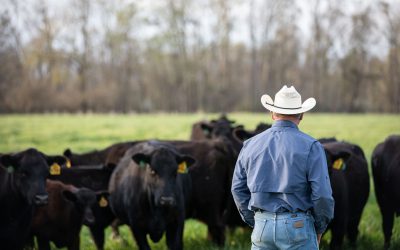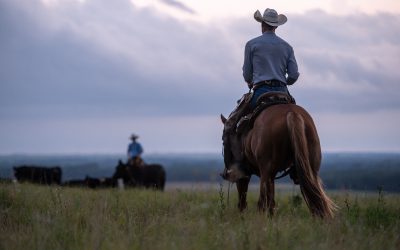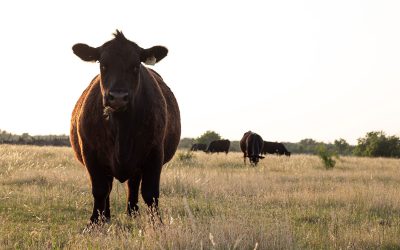Footsteps worth following: Meant to ranch
Four-year-old Walker Bradley’s favorite place seems to be tagging along on the four-wheeler as his dad or grandpa checks cows.
If I lived on a ranch with view of Glacier National Park off to one side and the Canadian border on another, it might be my favorite place to be, too. But, I bet Walker doesn’t quite appreciate all that scenery just yet.
Soon enough, the preschooler will begin to realize the privilege it is to work under the Montana sky, accountable only to yourself for an honest day’s work.
At least that’s how I imagine it’s been going on in the Bradley family for generations. I spent half a day with Hugh and Shandi Bradley, their son Walker and Hugh’s dad, Guy, last month.
I learned how Hugh is using GeneMax® DNA testing to “get a better picture of what’s going on.” He told me about future directions and selection goals, but you’ll have to wait for that story in the coming weeks.
Today, it’s all about recognizing how a love of land and livestock is passed on from grandfather to grandson, from father to son.
Why ranching?
Guy jokes that he wasn’t smart enough to do anything else, but I suspect he was smart enough not to.
His grandfather made the decision to do less farming, more cow tending, so that’s how Guy grew up. His parents established a ranch an hour or so southwest of the home base and when Guy’s grandpa passed away he stood ready to take the reins on the Cut Bank, Mont., location.
“That’s what I always wanted to do,” the experienced rancher says.
Hugh had a degree and a job in construction, where he got the weekends off, so Guy debated whether his first-born would come back to the ranch.
“It’s ingrained into me I suppose,” the son says. “It’s just how I’ve always been for as long as I can remember.”
It’s hard to put it into words when you’re doing something you feel like you were meant to do.
With the purchase of a his first bunch of cows and a house in town, and a new bride by his side, Hugh came back to work alongside his dad close to a decade ago.
Filling up my notebook on a 65-degree, sunny day in May, I laughed when he said a Montana winter is his favorite time of year, but Hugh wasn’t kidding.
“There is still a lot to do and it’s still an all-day process, but it isn’t as pushy,” he says.
Maybe that leaves more time to think about what the ranch and herd will look like when he may pass it down to Walker, or his seven-year-old daughter Olivia. It’s hard to fathom what changes in technology and business will happen in their lifetime, but Hugh knows he’s going to use the tools available to him now to make sure it’s set in the right direction.
“I’m trying to better everything in a shorter period of time,” he says.
That seems to be a theme—across all segments of the beef community–fathers wanting to be sure their footsteps are worth following.
I have a good feeling these ones are.
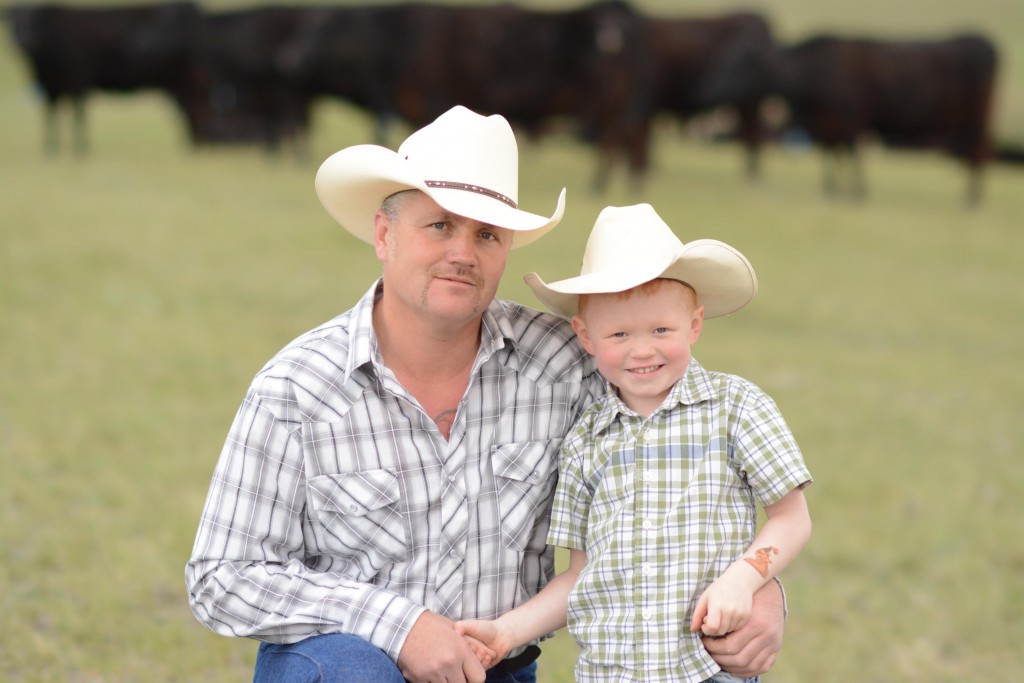
Miranda
A love of ranching is often passed on from generation to generation, but this week we also showed you that spark for the beef community is often shared within families who process and market the product, too. Our “Footsteps worth following” series celebrates fathers and profiles some of the men who have pursued their careers with an intensity that has inspired their sons to join the profession.
Read the entire series here:
You may also like
Progress from small steps
Every day is a chance to learn and get better. Thousands of others like my new friends in Alabama are taking steps to meet the shifts in consumer demand, and to know more. Small steps in the right direction can start now. Even if it’s just recording a snapshot of where you are today, a benchmark for tomorrow.
Not perfect, but working to get better
The CAB Cattleman Connection team heard its name called more than once in the virtual ceremonies, and each time came a sense of personal accomplishment, but even better: confirmation that we’re getting better at our craft. I hope that means we’re doing a better job for you.
Beefed up findings
Frank Mitloehner presents his findings on the animal ag sector’s impact on global warming. He explains how cattle counterbalance other fossil fuel sectors, proving that cattle are a solution and not a threat.

